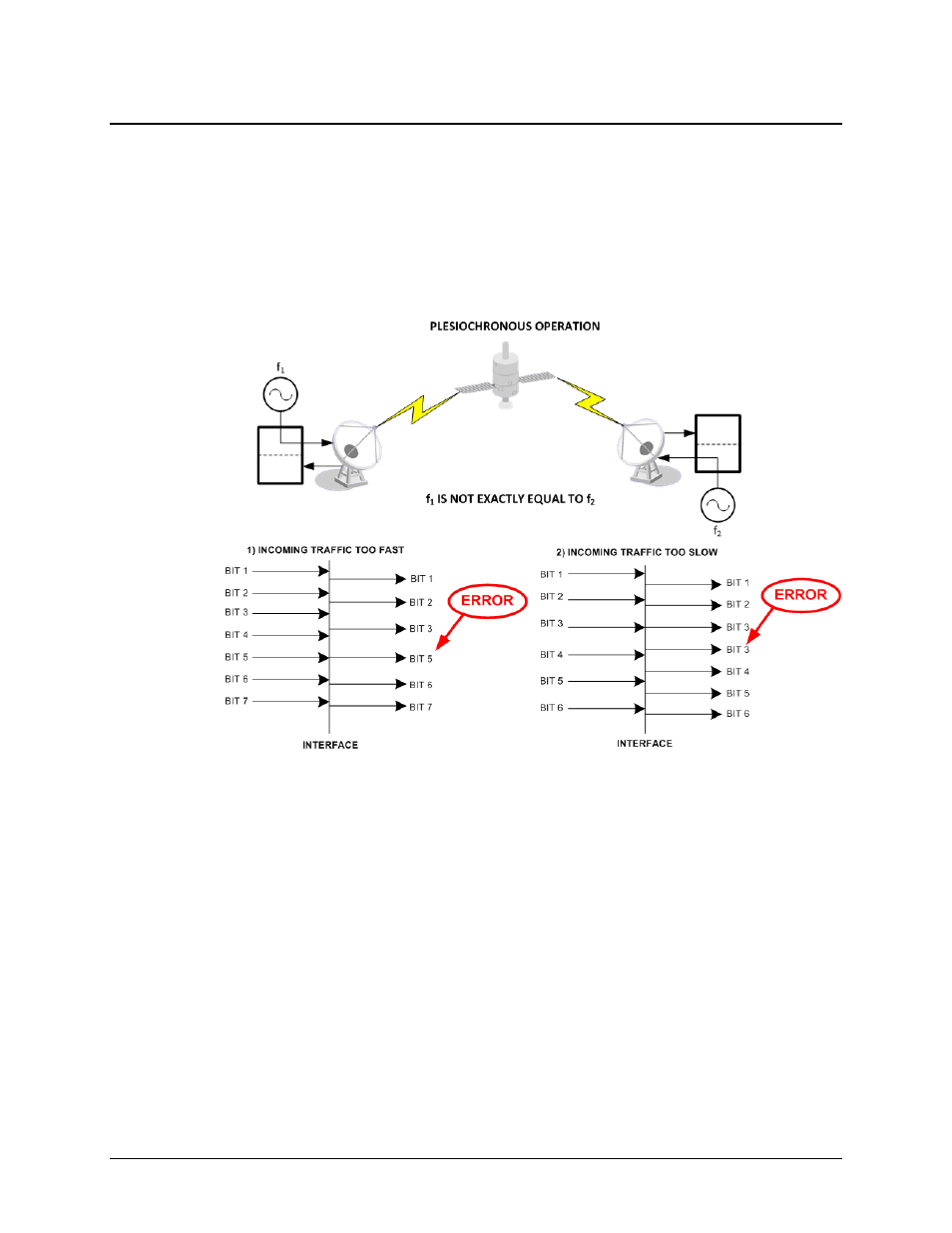Comtech EF Data SLM-5650A User Manual
Page 349

SLM-5650A Satellite Modem
Revision 8
Appendix B
B–15
B.4 Buffering
There are two reasons for a receive buffer:
1. Plesiochronous buffering of two dissimilar clock frequencies (normally the far end TX
clock verses the local network clock). The clocks may be very close in frequency to each
other and will normally slip at a constant rate. Figure B-3 shows plesiochronous operation
for dissimilar clocks. If incoming traffic is too fast, an occasional bit will be lost. If
incoming traffic is too slow, an occasional bit will be repeated.
Figure B-3. Clock Slip
2. Doppler buffer of the signal of the satellite. The Doppler shift results from the “Figure 8”
station-keeping movement performed by the satellite in space over a period of one day
(Figure B-4). Doppler shift should not result in a clock slip, as the buffer will constantly
fill and empty.